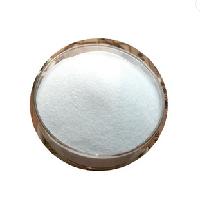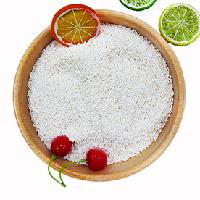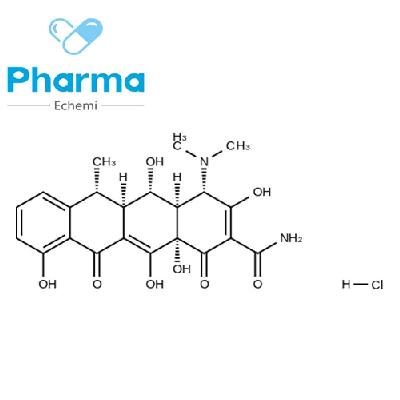-
Categories
-
Pharmaceutical Intermediates
-
Active Pharmaceutical Ingredients
-
Food Additives
- Industrial Coatings
- Agrochemicals
- Dyes and Pigments
- Surfactant
- Flavors and Fragrances
- Chemical Reagents
- Catalyst and Auxiliary
- Natural Products
- Inorganic Chemistry
-
Organic Chemistry
-
Biochemical Engineering
- Analytical Chemistry
-
Cosmetic Ingredient
- Water Treatment Chemical
-
Pharmaceutical Intermediates
Promotion
ECHEMI Mall
Wholesale
Weekly Price
Exhibition
News
-
Trade Service
Global Coatings Network News:
1.
2.
It stores waste water discharged during production accidents, with an effective volume of 486m3 and a steel-concrete structure.
④Initial rainwater pool
Collect the initial rainwater in the plant area and enter it into the aerobic system for treatment.
The effective volume is 1269m3, with a steel-concrete structure.
2.
2 Anaerobic tank
A small amount of activated carbon is added to the hydrolysis acidification tank to provide a growth carrier for the anaerobic sludge.
The effective pool capacity is 532m3, the residence time is 48h, and it has a steel-concrete structure.
Equipped with 2 flow thrusters with a diameter of 400mm and a power of 3kW.
2.
3 Integrated oxidation ditch
The oxidation ditch adopts blast aeration.
Aerobic microorganisms in wastewater use oxygen to reproduce themselves, degrade most of the organic matter in the water, and remove nutrients such as N and P.
Activated carbon is also added to improve the removal effect.
The effective volume of the oxidation ditch is 1500m3, the steel-concrete structure, the residence time is 10d, and the volumetric load is 0.
45kgCOD/(m3·d).
Main equipment: 4 flow thrusters with a diameter of 1.
8m and a power of 0.
75kW; two fans with an air volume of 10m3/min, a wind pressure of 63.
7kPa and a power of 18.
5kW.
2.
4 Second settling tank
The effective volume of the secondary settling tank is 275m3, the surface load is 0.
17m3/(m2·h), and it has a steel-concrete structure.
2.
5 Mud Pool
The sludge discharged from the sedimentation tank flows back to the integrated oxidation ditch after passing through the tank.
The effective volume is 75m3, with a steel-concrete structure.
Main equipment: sludge return pump, flow rate is 50m3/h, lift is 150kPa, power is 3.
0kW, 1 use and 1 backup.
2.
6 Advanced treatment pool
The advanced treatment tank is equipped with flocculation dosing and activated carbon dosing and adsorption devices to further reduce the concentration of pollutants in the effluent of the secondary settling tank.
The effective volume is 275m3, the surface load is 0.
17m3/(m2·h), and it has a steel-concrete structure.
2.
7 Clean water pond
①Clear pool one
It is mainly used to store the effluent of advanced treatment, partly as the circulating supplementary water of the cooling tower, and partly discharged outside.
The effective volume is 275m3, the residence time is 2d, and it has a steel-concrete structure.
②Clear water pond 2
The effective volume is 138m3, the residence time is 2d, and it has a steel-concrete structure.
2.
8 Sludge tank
It is mainly used to store the scum discharged from the air flotation tank and the remaining sludge discharged from the integrated oxidation ditch sedimentation zone.
The effective volume is 138m3, with a steel-concrete structure.
3.
Analysis of operation effect
Analysis of operation effect
3.
1 Removal of organic matter
The project entered the stable operation stage after 4 months of commissioning.
The removal of organic matter during stable operation is shown in Figure 2.
As can be seen from Figure 2, due to the intermittent discharge of paint wastewater during the stable operation stage, the influent COD still fluctuates greatly.
The initial influent COD is as high as 2000mg/L, but the effluent COD is basically maintained below 100mg/L, and the COD removal rate is more than 95%.
This shows that after the preliminary commissioning and operation, the microorganisms in the hydrolysis acidification tank and the oxidation ditch have basically adapted to the water quality of this kind of wastewater and the sludge activity is high, which can fully degrade the organic matter in the wastewater.
After that, the influent COD dropped to about 1000mg/L, and the effluent COD also dropped below 50mg/L.
However, on the 42nd to 48th days, the COD concentration of the effluent was 118.
2~237.
6 mg/L, which exceeded the discharge standard.
The final effluent COD is stable at 60-85mg/L, and the average effluent COD concentration is 70mg/L, which meets the standard of "Urban Sewage Recycling Industrial Water Quality" (GB/T19923-2005).
3.
2 Removal of ammonia nitrogen
The removal of ammonia nitrogen in this project is shown in Figure 3.
It can be seen from Figure 3 that the ammonia nitrogen concentration of the influent water is basically maintained at 10-40mg/L.
After treatment, the ammonia nitrogen of the effluent drops to 0.
01-4mg/L, and the removal rate is >90%.
This shows that the oxidation ditch has a better effect on ammonia nitrogen.
Removal.
In addition, when the concentration of ammonia nitrogen in the inlet water rises sharply to about 100 mg/L, the ammonia nitrogen in the effluent remains below 0.
5 mg/L, which is much lower than the discharge standard of 10 mg/L, which indicates that the microbial growth in the oxidation ditch is in good condition.
It has strong impact resistance to the influent water quality.
3.
3 Removal of total phosphorus
Figure 4 shows the removal of total phosphorus.
It can be seen from Figure 4 that the total phosphorus in the influent is relatively low, basically below 5mg/L.
After the hydrolysis acidification tank-oxidation ditch treatment, the total phosphorus in the effluent drops below 0.
5 mg/L, which can meet the discharge standards.
However, during the operation, it was also found that the total phosphorus in the effluent was basically above 1mg/L on the 42nd to 46th day, which exceeded the discharge standard.
Therefore, it is necessary to add an appropriate amount of chemicals to the advanced treatment tank for chemical phosphorus removal.
4.
Operating cost estimate
Operating cost estimate
4.
1 Costs of chemicals
①The lye used in the regulating tank
The adjustment tank adopts 48% liquid caustic soda to adjust the pH value, the price is 950 yuan/t, and the cost is 0.
1 yuan/m3.
②PAC and PAM used for air flotation
Before the air flotation tank enters the water, a certain amount of PAC and PAM needs to be added to make the suspended solids form flocs, which is convenient for air flotation removal.
The price of PAC is 2,000 yuan/t, PAM (cation) is 30,000 yuan/t, the dosage of PAC is 0.
02kg/m3, the dosage of PAM is 0.
005kg/m3, and the cost is 0.
19 yuan/m3.
③PAC and PAM used for advanced processing
The dosage of PAC is 0.
04kg/m3, the dosage of PAM is 0.
008kg/m3, and the cost is 0.
32 yuan/m3.
④Sludge conditioning agent
The sludge output of the system is 150m3/d, and the moisture content is 99.
2%.
Sludge dewatering needs to add a certain amount of anionic PAM, the dosage of PAM is 0.
005kg/kgDS, the price of PAM (anion) is 12,000 yuan/t, and the cost is 0.
3 yuan/m3.
⑤Chemical analysis
The cost of conventional COD, VFA and other analytical reagents is about 0.
02 yuan/m3.
The total of the above items is 0.
93 yuan/m3.
4.
2 Electricity bill
The total installed power is about 103.
5kW, of which the 24h start-up power is about 51.
05kW.
The electricity price is calculated at 0.
57 yuan/(kW·h), and the electricity fee is 0.
145 yuan/m3.
4.
3 Labor costs
If the number of staff is 2 and the salary is 2,000 yuan/(month·person), the labor cost is 0.
67 yuan/m3.
The direct operating cost is the total of the above costs, totaling 1.
74 yuan/m3.
5 Conclusion
Using hydrolytic acidification/integrated oxidation ditch process to treat paint production wastewater, and adding biological activated carbon in the hydrolysis acidification tank and oxidation ditch, achieved good results, and the treated effluent quality reached the "Urban Wastewater Recycling Industrial Water Quality" (GB/T19923) —2005) standard, can also be directly discharged into the urban sewage pipe network.
(Source: Global Coatings Network) (For more information, please log in: Global Coatings Network http://







